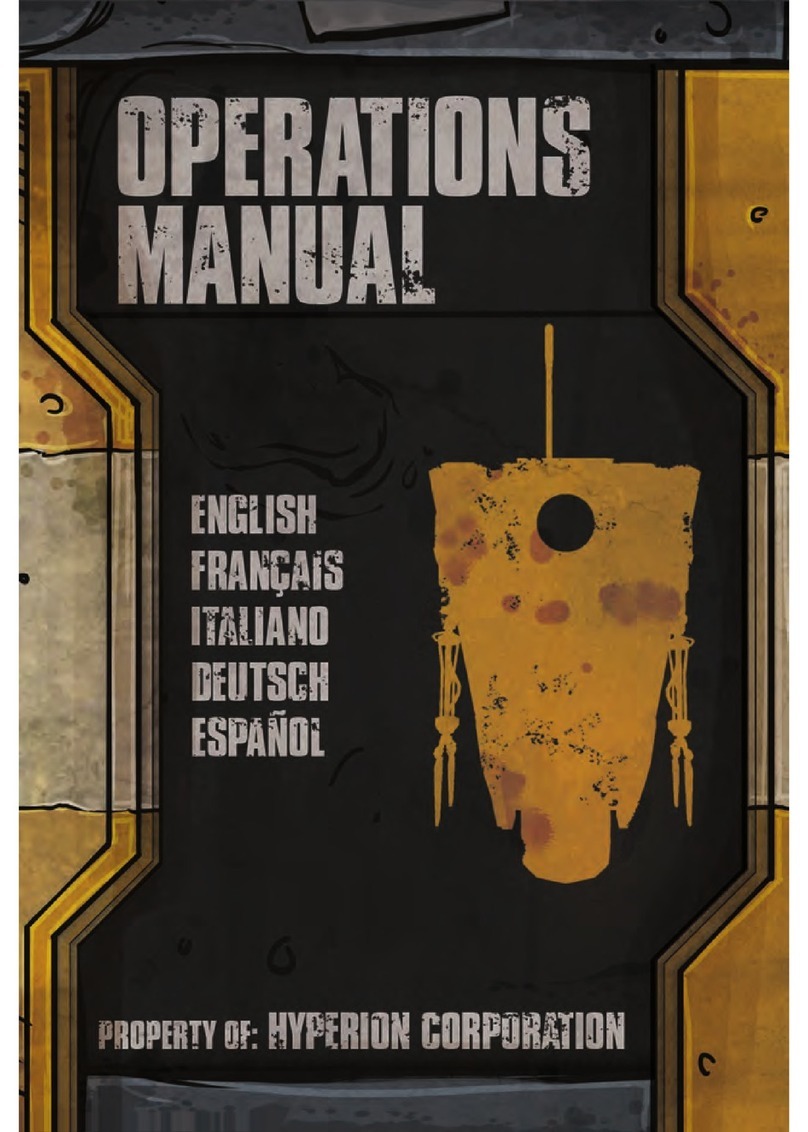
BUILD GUIDE
NOTE: Each of the steps below correspond to the numbered diagrams in the pictorial
assembly manual. Where differences occur, follow the TEXT, not the pictorial.
Diagram #1 – AILERONS
*Refer to the diagram to locate the servo cutout and the servo lead exit hole in bottom of the left wing panel,
and using a sharp Xacto knife, carefully remove the covering over the cutout and exit hole.
*Remove the aileron from the left wing panel. Insert all four aileron hinges half way into the aileron. Position
each hinge at 90 degrees to the trailing edge. After making sure the hinges are also aligned with the
corresponding slots in the wing trailing edge, secure each hinge to the aileron with a single drop of fast CA glue.
*Place the aileron back onto the wing, making sure all four hinges enter their corresponding slots in the wing
trailing edge and the aileron is centered, with no binding against the wing at either end.
*Hold the aileron slightly deflected away from you, and SLOWLY apply thin CA to each hinge. Be careful not to
apply too much CA or apply it too quickly, or it may flow along the hinge line. Turn the wing over and repeat.
*Repeat the entire process for the right wing panel.
Diagram #2 – AILERON SERVOS & LINKAGE
*Install a servo in the left wing panel with the servo lead (and extension if desired) routed inside the inner wing
and then out through the exit hole.
* Mount the control horn on the aileron. The horn should be positioned on the aileron so that it is even with
the outer edge of the wing center section sheeting. Use two 2.3 x 8 mm Philips screws. After mounting the
control horn, remove it and saturate the screw holes with thin CA for added strength. Re-mount the aileron
control horn after the CA has set.
*Insert the Z-bend end of an aileron pushrod through the control horn. Attach the pushrod to the servo arm
using your preferred method -- a pushrod connector, nylon retainer, or another Z-bend.
*Repeat the entire process for the right wing panel.
Diagram #3 – MAIN WING ASSEMBLY
*Lightly sand the plywood wing joiner and check to see that it fits smoothly but snugly into each wing panel.
*Test fit both wing panels and the plywood wing joiner together, making sure that no gap remains between the
two wing panels.
*Assemble the two wing panels and wing joiner using slow-setting epoxy. Use tape or clamps to hold the two
panels in proper alignment.
Diagram #4 – STABILIZER/VERTICAL FIN
*Note that the stabilizer and elevator assembly are joined by the covering material -- no hinges are required.
The stabilizer/elevator assembly should be mounted with the smooth side of the hinge line up and the
V-grooved side down, for best appearance
*Using a sharp Xacto knife, remove the covering from the fuselage over the stabilizer slot. Note that the slot
opens up into a V-shape at the back to allow free movement of the elevators.
*Test fit the stabilizer/elevator assembly into the fuselage. Check for free elevator movement. Using the
diagram as a reference, align the stabilizer so that it is centered and level.
*Use small pieces of tape on both sides of the stabilizer (top and bottom) up against the fuselage sides, to
mark where the covering must be removed from the stabilizer to provide for a solid glue joint.
*Remove the stabilizer from the fuselage. Carefully cut through and remove the covering between the tape
markers (the shaded area in the diagram). Install the stabilizer using slow epoxy to allow time to re-check
centering and alignment.
*Referring to the diagram, drill three 1 mm holes in the bottom of the fuselage, and install the tailskid using
two 2.3 x 8 mm Philips screws and a plastic retainer plate.
*Cut a slot in the back of the fuselage for the bottom rudder hinge, and test fit the vertical fin and rudder.
*Separate the rudder and vertical fin. Insert all three hinges halfway into the rudder. After checking to be
sure they are at 90 degrees with the hinge line, and are aligned with the slots in the vertical fin and fuselage,
apply a single drop of fast CA to hold the hinges in position in the rudder.
*Insert the vertical fin into its slot in the top of the fuselage. Use small pieces of tape to mark where the
covering must be removed.
*Remove the vertical fin, and with a sharp Xacto knife, cut through and remove the covering below the tape
markers (shaded area on the diagram).
*Reinstall the vertical fin using epoxy, and making sure that (1) it is at 90 degrees to the stabilizer, and (2) the
rear edge of the vertical fin is aligned with the back of the fuselage.
*Reattach the rudder to the vertical fin, being sure all three hinges enter their respective slots. Flex the rudder
slightly to one side and slowly apply a small amount of fast CA to each hinge. Repeat for the other side of the
hinges.






















